PGC-1α induced browning promotes involution and inhibits lactation in mammary glands
- PMID: 31154462
- PMCID: PMC11105553
- DOI: 10.1007/s00018-019-03160-y
PGC-1α induced browning promotes involution and inhibits lactation in mammary glands
Abstract
The PPARγ coactivator 1α (PGC-1α) is a transcriptional regulator of mitochondrial biogenesis and oxidative metabolism. Recent studies have highlighted a fundamental role of PGC-1α in promoting breast cancer progression and metastasis, but the physiological role of this coactivator in the development of mammary glands is still unknown. First, we show that PGC-1α is highly expressed during puberty and involution, but nearly disappeared in pregnancy and lactation. Then, taking advantage of a newly generated transgenic mouse model with a stable and specific overexpression of PGC-1α in mammary glands, we demonstrate that the re-expression of this coactivator during the lactation stage leads to a precocious regression of the mammary glands. Thus, we propose that PGC-1α action is non-essential during pregnancy and lactation, whereas it is indispensable during involution. The rapid preadipocyte-adipocyte transition, together with an increased rate of apoptosis promotes a premature mammary glands involution that cause lactation defects and pup growth retardation. Overall, we provide new insights in the comprehension of female reproductive cycles and lactation deficiency, thus opening new roads for mothers that cannot breastfeed.
Keywords: Adipocytes; Coactivator; Development; Involution; Mammary glands; Nuclear receptor.
Conflict of interest statement
The authors declare no competing financial interests.
Figures
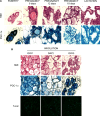
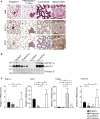
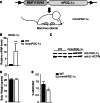
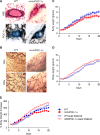
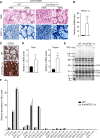
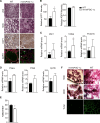
References
-
- Watson CJ, Kreuzaler PA. Remodeling mechanisms of the mammary gland during involution. Int J Dev Biol. 2011;55:757–762. - PubMed
-
- Neville MC. Physiology of lactation. Clin Perinatol. 1999;26(251–79):v. - PubMed
-
- Neville MC, Picciano MF. Regulation of milk lipid secretion and composition. Annu Rev Nutr. 1997;17:159–183. - PubMed
-
- Allen JC, Keller RP, Archer P, Neville MC. Studies in human lactation: milk composition and daily secretion rates of macronutrients in the first year of lactation. Am J Clin Nutr. 1991;54:69–80. - PubMed
-
- Schwertfeger KL, McManaman JL, Palmer CA, Neville MC, Anderson SM. Expression of constitutively activated Akt in the mammary gland leads to excess lipid synthesis during pregnancy and lactation. J Lipid Res. 2003;44:1100–1112. - PubMed
MeSH terms
Substances
Grants and funding
LinkOut - more resources
Full Text Sources

